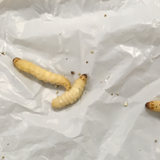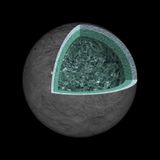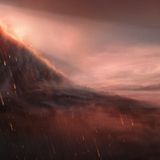RECENT ARTICLES

5 NASA Science Projects That Can Help Teach Kids Astronomy
This artist's concept shows the hypothetical super-Earth known as Planet Nine or Planet X, which some researchers think lurks far beyond Pluto in the outer reaches of the solar system. (Credit: R. Hurt/IPAC/Caltech)Sign up for our email newsletter for the latest science newsOver the past decade or so, astronomers have discovered a number of far-flung objects that all have very similar perihelia, meaning they make their closest approaches to the sun at about the same location in space. One leading theory that attempts to explain the clustering is that a massive and unseen world known as...…This artist's concept shows the hypothetical super-Earth known as Planet Nine or Planet X, which some researchers think lurks far beyond Pluto in the outer reaches of the solar system. (Credit: R. Hurt/IPAC/Caltech)Sign up for our email newsletter for the latest science newsOver the past decade or so, astronomers have discovered a number of far-flung objects that all have very similar perihelia, meaning they make their closest approaches to the sun at about the same location in space. One leading theory that attempts to explain the clustering is that a massive and unseen world known as...WW…

Ceres: An Ocean World in the Asteroid Belt
NASA scientists say that Ceres, a dwarf planet in the Asteroid Belt, is still holding onto pockets of a subsurface, liquid water ocean. (Credit: NASA/JPL-Caltech/UCLA/MPS/DLR/IDA)Sign up for our email newsletter for the latest science newsOccator Crater stretches across 57 miles (92 kilometers) in Ceres' northern hemisphere. Astronomers think the bright spots inside its walls formed when a space rock smashed into the dwarf planet, excavating a briny liquid from below. (Credit: NASA/JPL-Caltech/UCLA/MPS/DLR/IDA)Near the end of its mission, NASA's Dawn spacecraft captured intimate details of...…NASA scientists say that Ceres, a dwarf planet in the Asteroid Belt, is still holding onto pockets of a subsurface, liquid water ocean. (Credit: NASA/JPL-Caltech/UCLA/MPS/DLR/IDA)Sign up for our email newsletter for the latest science newsOccator Crater stretches across 57 miles (92 kilometers) in Ceres' northern hemisphere. Astronomers think the bright spots inside its walls formed when a space rock smashed into the dwarf planet, excavating a briny liquid from below. (Credit: NASA/JPL-Caltech/UCLA/MPS/DLR/IDA)Near the end of its mission, NASA's Dawn spacecraft captured intimate details of...WW…

What Would Happen if You Fell Into a Black Hole?
If an astronaut fell into a black hole, they wouldn't have a peaceful ride. They'd be stretched out like a noodle. (Credit: NASA (astronaut); NASA/ESA and G. Bacon, STScI (black hole illustration)Sign up for our email newsletter for the latest science news1 free article leftWant More? Get unlimited access for as low as $1.99/monthAlready a subscriber? or Want more?Keep reading for as low as $1.99!Already a subscriber? or Related ContentStay CuriousJoinOur ListSign up for our weekly science updates.SubscribeTo The MagazineSave up to the cover price when you subscribe to Discover magazine.…If an astronaut fell into a black hole, they wouldn't have a peaceful ride. They'd be stretched out like a noodle. (Credit: NASA (astronaut); NASA/ESA and G. Bacon, STScI (black hole illustration)Sign up for our email newsletter for the latest science news1 free article leftWant More? Get unlimited access for as low as $1.99/monthAlready a subscriber? or Want more?Keep reading for as low as $1.99!Already a subscriber? or Related ContentStay CuriousJoinOur ListSign up for our weekly science updates.SubscribeTo The MagazineSave up to the cover price when you subscribe to Discover magazine.WW…

Scientists Found a Caterpillar That Eats Plastic. Could It Help Solve our Plastic Crisis?
A waxworm, the larvae of the greater wax moth. (Credit: Kuttelvaserova Stuchelova/Shutterstock)Sign up for our email newsletter for the latest science newsGreater wax moth caterpillars munch on a plastic bag. (Credit: Harald Grove/Brandon University)Greater wax moth caterpillar larvae eat a plastic bag. (Credit: Harald Grove/Brandon University)1 free article leftWant More? Get unlimited access for as low as $1.99/monthAlready a subscriber? or Want more?Keep reading for as low as $1.99!Already a subscriber? or Related ContentStay CuriousJoinOur ListSign up for our weekly science...…A waxworm, the larvae of the greater wax moth. (Credit: Kuttelvaserova Stuchelova/Shutterstock)Sign up for our email newsletter for the latest science newsGreater wax moth caterpillars munch on a plastic bag. (Credit: Harald Grove/Brandon University)Greater wax moth caterpillar larvae eat a plastic bag. (Credit: Harald Grove/Brandon University)1 free article leftWant More? Get unlimited access for as low as $1.99/monthAlready a subscriber? or Want more?Keep reading for as low as $1.99!Already a subscriber? or Related ContentStay CuriousJoinOur ListSign up for our weekly science...WW…

How One Million Volunteers Could One Day Revolutionize Medicine
An All of Us staff member sorts new samples from volunteers. (Credit: All of Us/NIH)Sign up for our email newsletter for the latest science newsThe NIH has now enrolled hundreds of thousands of volunteers, and participants have now started to receive the first results from their genetic samples. (Credit: All of Us/NIH)An All of Us staff member measures a participant’s height. (Credit: All of Us/NH)1 free article leftWant More? Get unlimited access for as low as $1.99/monthAlready a subscriber? or Want more?Keep reading for as low as $1.99!Already a subscriber? or Related ContentStay...…An All of Us staff member sorts new samples from volunteers. (Credit: All of Us/NIH)Sign up for our email newsletter for the latest science newsThe NIH has now enrolled hundreds of thousands of volunteers, and participants have now started to receive the first results from their genetic samples. (Credit: All of Us/NIH)An All of Us staff member measures a participant’s height. (Credit: All of Us/NH)1 free article leftWant More? Get unlimited access for as low as $1.99/monthAlready a subscriber? or Want more?Keep reading for as low as $1.99!Already a subscriber? or Related ContentStay...WW…

Earth Isn't the Only Ocean World in the Solar System
XLog InCreate an AccountXYour email address is used to log in and will not be shared or sold. ContinueXApply codeIf you are a Zinio, Nook, Kindle, Apple, or Google Play subscriber, you can enter your website access code to gain subscriber access. Your website access code is located in the upper right corner of the Table of Contents page of your digital edition.Log InThe icy dwarf planet Ceres appears to hold a subsurface sea. This discovery fuels the hunt for life beyond Earth. (Credit: NASA/JPL-Caltech/UCLA/MPS/DLR/IDA)Sign up for our email newsletter for the latest science newsSign up for...…XLog InCreate an AccountXYour email address is used to log in and will not be shared or sold. ContinueXApply codeIf you are a Zinio, Nook, Kindle, Apple, or Google Play subscriber, you can enter your website access code to gain subscriber access. Your website access code is located in the upper right corner of the Table of Contents page of your digital edition.Log InThe icy dwarf planet Ceres appears to hold a subsurface sea. This discovery fuels the hunt for life beyond Earth. (Credit: NASA/JPL-Caltech/UCLA/MPS/DLR/IDA)Sign up for our email newsletter for the latest science newsSign up for...WW…

How Elon Musk's Historic Launch Changes the Future of Space Exploration
SpaceX’s Crew Dragon launches from Kennedy Space Center on May 30. (Credit: NASA/Bill Ingalls)Sign up for our email newsletter for the latest science newsDoug Hurley, right, and Robert Behnken safely return to Earth on Aug. 2. (Credit: NASA/Bill Ingalls)1 free article leftWant More? Get unlimited access for as low as $1.99/monthAlready a subscriber? or Want more?Keep reading for as low as $1.99!Already a subscriber? or Related ContentStay CuriousJoinOur ListSign up for our weekly science updates.SubscribeTo The MagazineSave up to the cover price when you subscribe to Discover magazine.…SpaceX’s Crew Dragon launches from Kennedy Space Center on May 30. (Credit: NASA/Bill Ingalls)Sign up for our email newsletter for the latest science newsDoug Hurley, right, and Robert Behnken safely return to Earth on Aug. 2. (Credit: NASA/Bill Ingalls)1 free article leftWant More? Get unlimited access for as low as $1.99/monthAlready a subscriber? or Want more?Keep reading for as low as $1.99!Already a subscriber? or Related ContentStay CuriousJoinOur ListSign up for our weekly science updates.SubscribeTo The MagazineSave up to the cover price when you subscribe to Discover magazine.WW…

Astronomers Find an Exoplanet Where Iron Rains From the Sky
Iron falls as rain on the gas giant planet WASP-76 b. (Credit: ESO/M. Kornmesser)Sign up for our email newsletter for the latest science news1 free article leftWant More? Get unlimited access for as low as $1.99/monthAlready a subscriber? or Want more?Keep reading for as low as $1.99!Already a subscriber? or Related ContentStay CuriousJoinOur ListSign up for our weekly science updates.SubscribeTo The MagazineSave up to the cover price when you subscribe to Discover magazine.…Iron falls as rain on the gas giant planet WASP-76 b. (Credit: ESO/M. Kornmesser)Sign up for our email newsletter for the latest science news1 free article leftWant More? Get unlimited access for as low as $1.99/monthAlready a subscriber? or Want more?Keep reading for as low as $1.99!Already a subscriber? or Related ContentStay CuriousJoinOur ListSign up for our weekly science updates.SubscribeTo The MagazineSave up to the cover price when you subscribe to Discover magazine.WW…
- Total 8 items
- 1